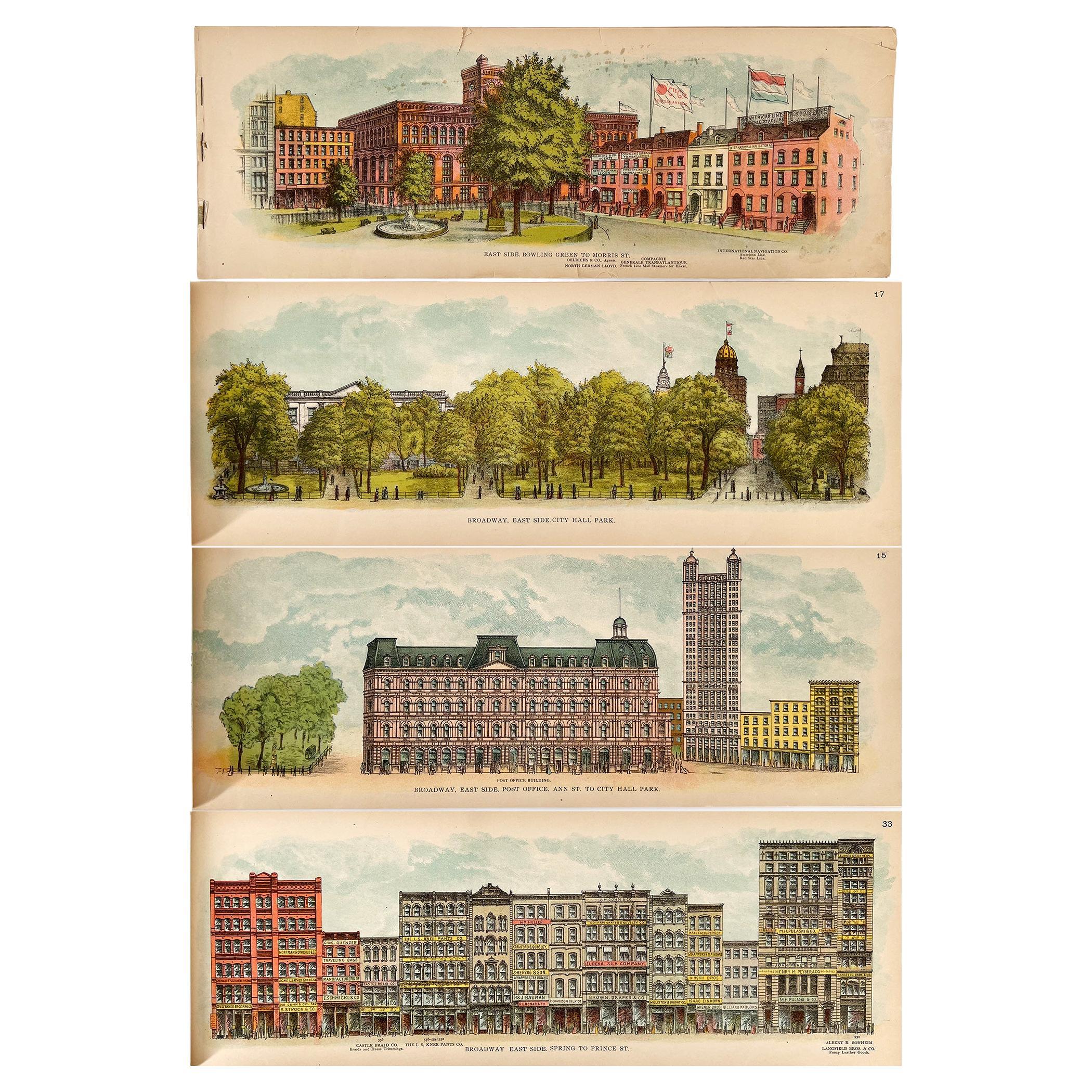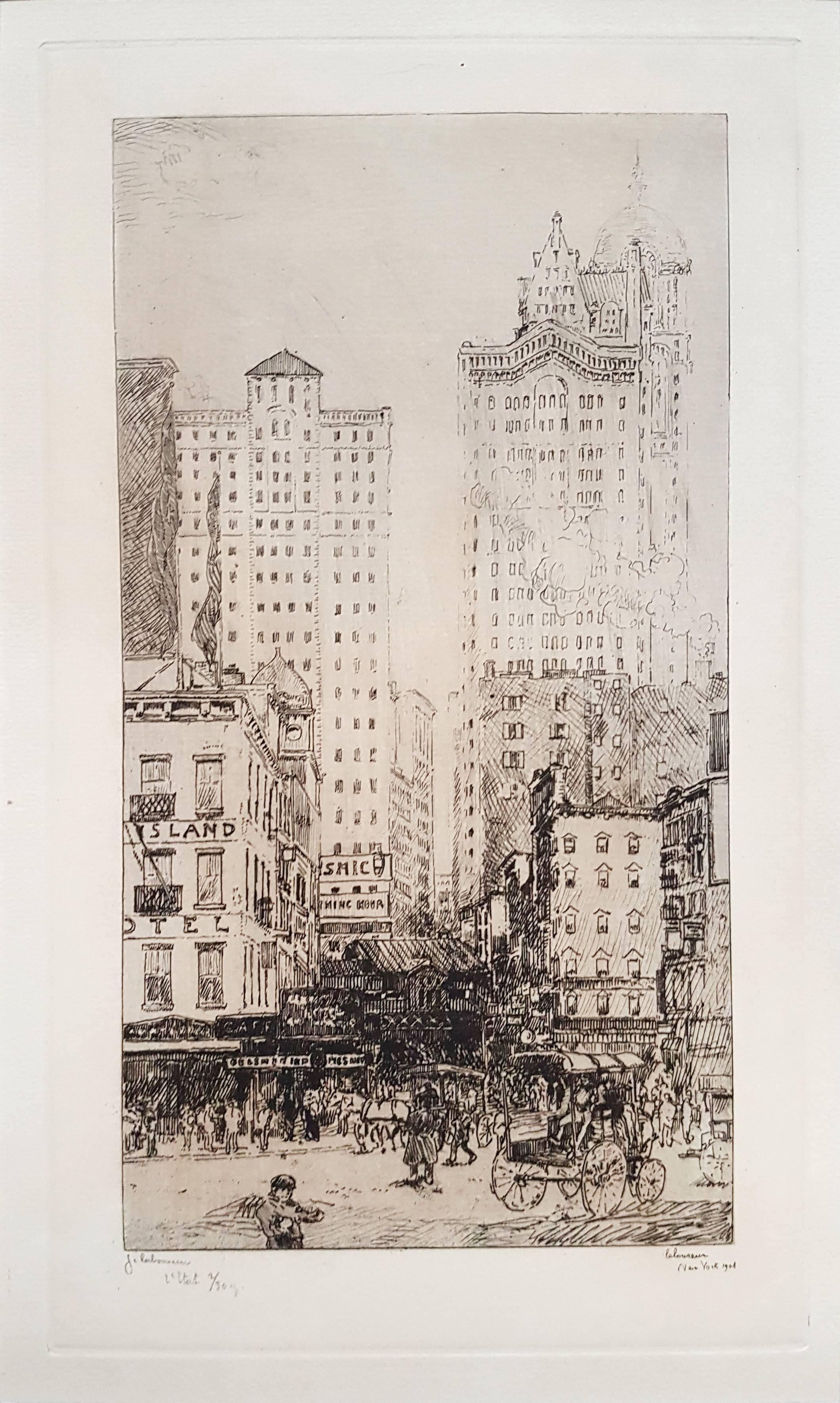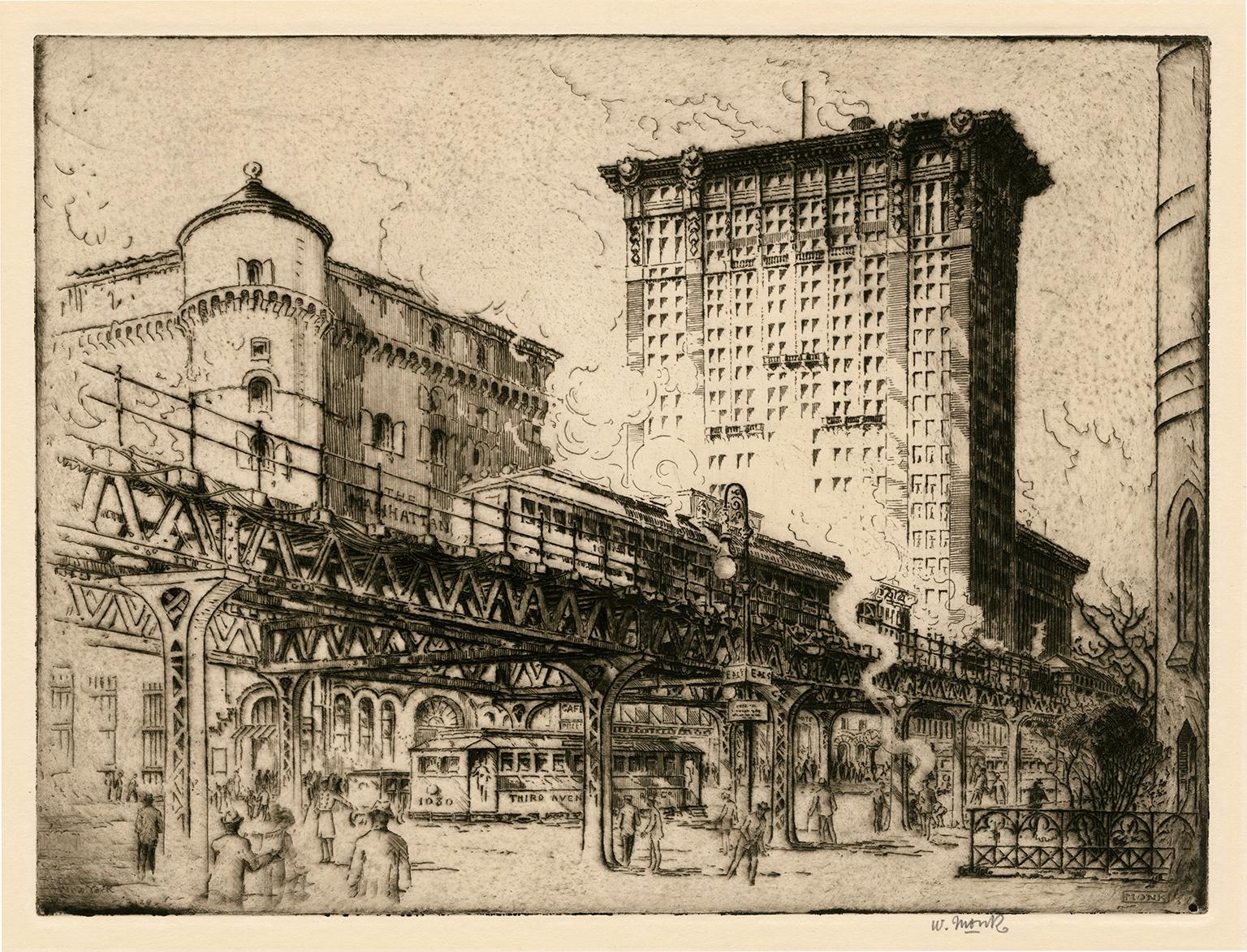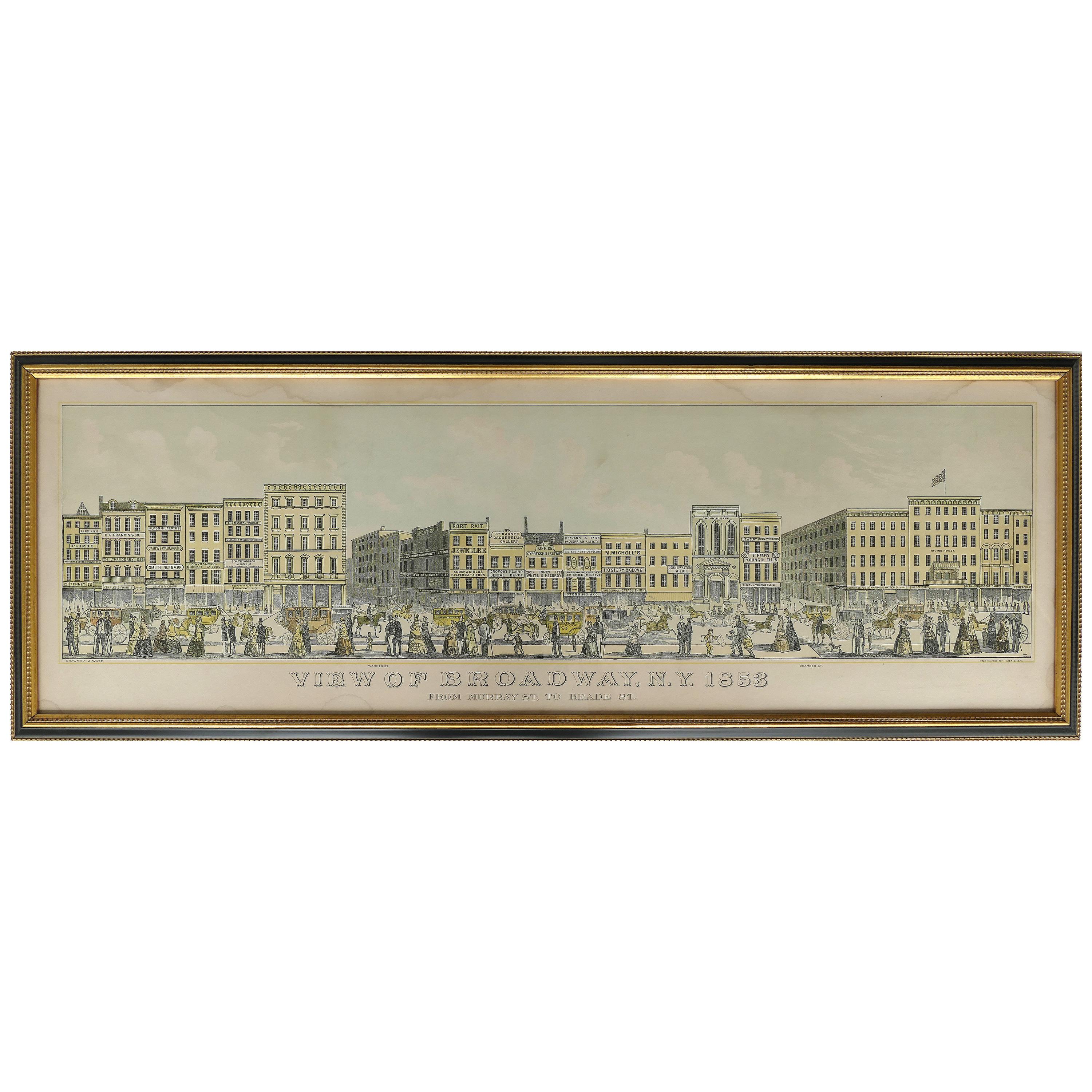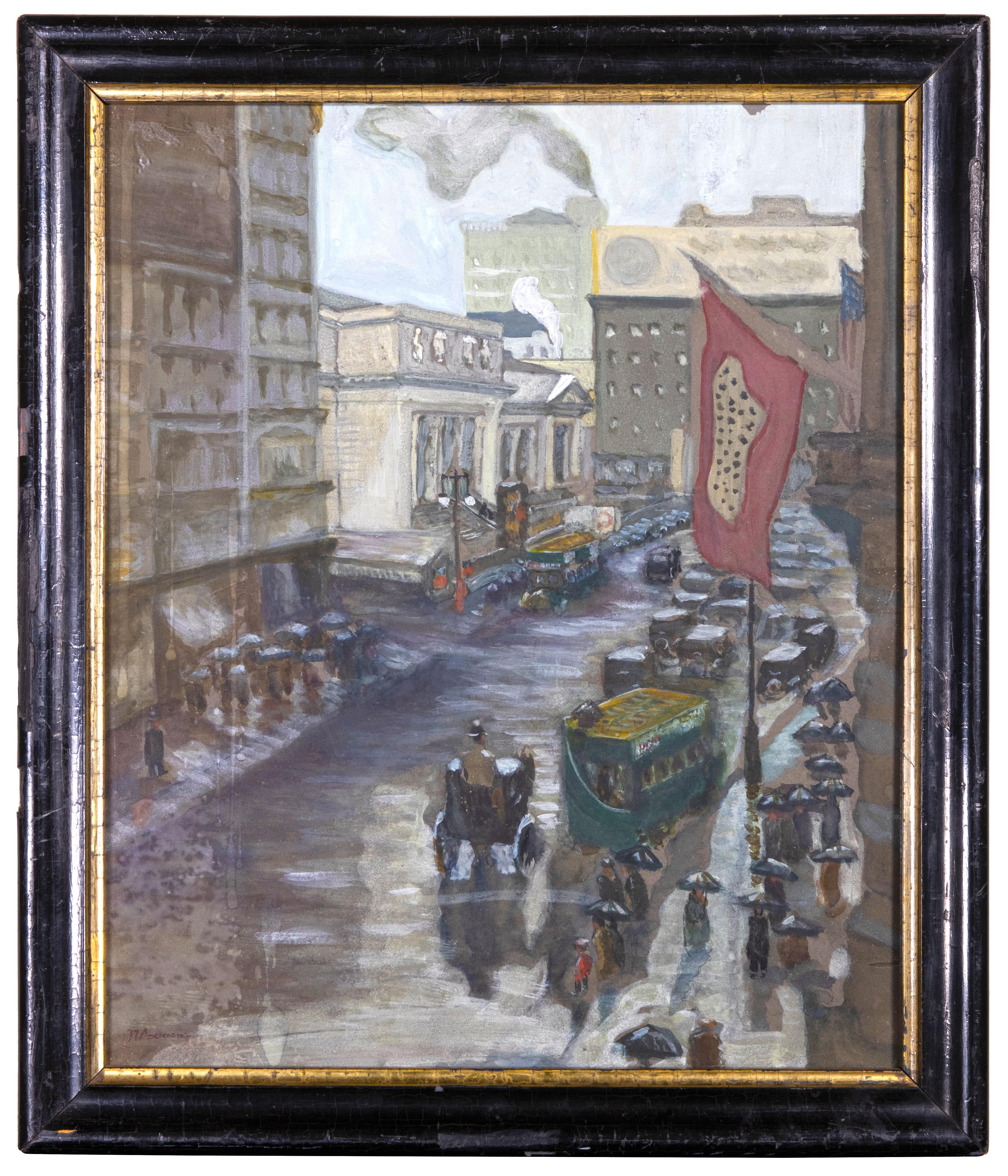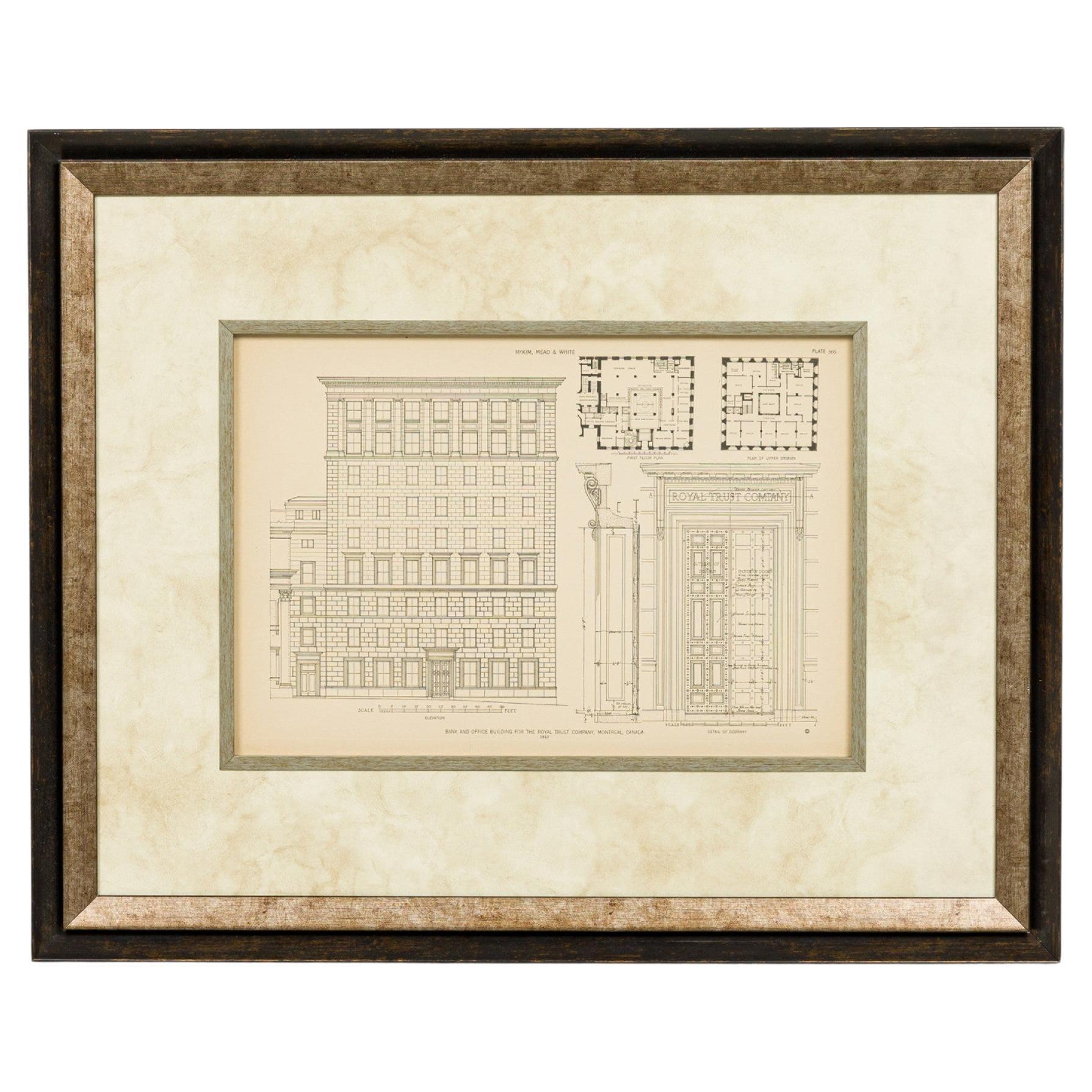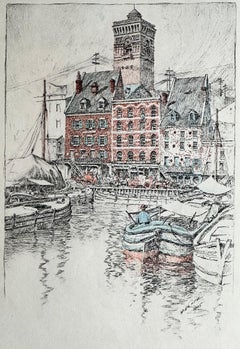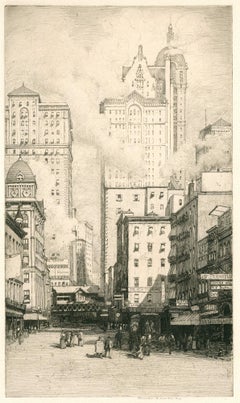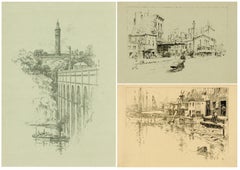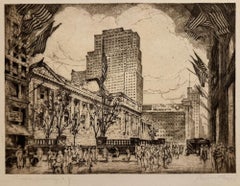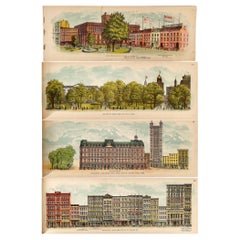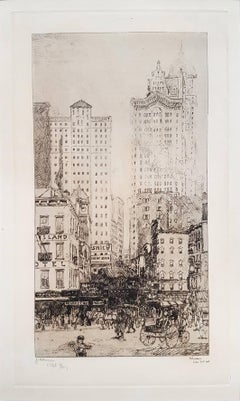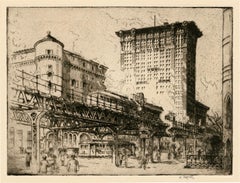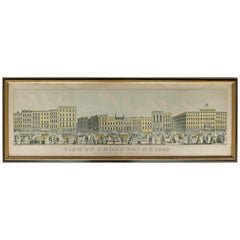Items Similar to A Pictorial View of Broadway, 1899 - 74 Chromolithograph plates
Want more images or videos?
Request additional images or videos from the seller
1 of 21
UnknownA Pictorial View of Broadway, 1899 - 74 Chromolithograph plates1899
1899
$8,000
£6,209.51
€7,074.73
CA$11,432.87
A$12,451.25
CHF 6,565.11
MX$151,443.19
NOK 82,556.02
SEK 77,430.79
DKK 52,829.04
About the Item
What did Broadway look like at the turn of the 20th Century? Here is a scarce and important block-by-block view published in 1899 by The Mail and Express
New York: The Mail and Express, 1899. First Edition.
Oblong folio, 6 1/8 x 16 7/8 inches (155 x 428 mm), 74 chromolithographs (pages printed on both sides), 2 pp. publisher's statement, 1 p. advertisement and 3 pp. index; stapled on short side. Paper wrappers and some advertisement pages missing but all images are present and intact, with just small margin tears on the first two pages, not affecting the images. Plates are evenly printed with clearly defined lines and vivid colors. Statement page detached and with some tears, chips, and stains. Paper evenly toned. The original blue paper envelope is included.
NYPL catalog ID (B-number): b12714370
RLIN/OCLC: 29278445.
A scarce and important block-by-block record of what both sides of Broadway looked like at the turn of the 20th Century, from Steamship Row to Bowling Green to 59th Street. The series of beautiful chromolithographs documents the most important thoroughfare of the city, block by block, on facing pages corresponding to the West Side and East Side of Broadway. Issued by The Mail & Express Company, which was the publisher of the Evening Mail, a New York City daily newspaper, this publication was a precursor of photographic books which became popular in the next decades.
Condition: Very Good.
- Creation Year:1899
- Dimensions:Height: 6.11 in (15.5 cm)Width: 16.86 in (42.8 cm)
- Medium:
- Movement & Style:
- Period:
- Condition:
- Gallery Location:Middletown, NY
- Reference Number:Seller: BH18271stDibs: LU1979215977722
About the Seller
5.0
Vetted Professional Seller
Every seller passes strict standards for authenticity and reliability
Established in 2004
1stDibs seller since 2022
76 sales on 1stDibs
Typical response time: 7 hours
- ShippingRetrieving quote...Shipping from: Middletown, NY
- Return Policy
Authenticity Guarantee
In the unlikely event there’s an issue with an item’s authenticity, contact us within 1 year for a full refund. DetailsMoney-Back Guarantee
If your item is not as described, is damaged in transit, or does not arrive, contact us within 7 days for a full refund. Details24-Hour Cancellation
You have a 24-hour grace period in which to reconsider your purchase, with no questions asked.Vetted Professional Sellers
Our world-class sellers must adhere to strict standards for service and quality, maintaining the integrity of our listings.Price-Match Guarantee
If you find that a seller listed the same item for a lower price elsewhere, we’ll match it.Trusted Global Delivery
Our best-in-class carrier network provides specialized shipping options worldwide, including custom delivery.More From This Seller
View AllPicturesque New York; Twelve Photogravures from Monotypes
By Charles Frederick William Mielatz
Located in Middletown, NY
New York: The Society of Iconophiles, 1908. The complete portfolio containing 12 photogravures after monotypes printed on O.W. handmade paper. Each image measuring approximately 8 1/4 x 6 inches (208 x 151 mm), with full margins. Each with the Society of Iconophiles blind stamp in the lower left margin. In very good condition with no visible defects. Printed by John Andrew & Son, Boston. Presented in the original greenish-gray paper wrapper with the contents page. Edition of 100.
Subjects are:
1. Van Cortland Manor House
2. Oyster Market on West Street
3. St. John's Chapel, Varick Street
4. Fraunces Tavern
5. Houses at Battery Park...
Category
Early 20th Century American Modern Landscape Prints
Materials
Photogravure
Cortland Street
Located in Middletown, NY
Etching with drypoint on antique handmade laid Japon paper, 12 7/8 x 7 1/2 (327 x 191 mm); sheet 15 5/16 x 10 7/16 (389 x 265 mm), full margins. Signed in pencil in the lower margin....
Category
Early 20th Century American Modern Landscape Prints
Materials
Etching, Drypoint
Ten of views of Manhattan (10).
By Charles Frederick William Mielatz
Located in Middletown, NY
The Society of Iconophiles (New York, 1894–1936), 1898. Each a lithograph printed on grayish-green, or white wove paper each sheet 10 3/4 x 7 1/2 inches (274 x 190 mm), each with ful...
Category
Early 20th Century American Modern Landscape Prints
Materials
Handmade Paper, Lithograph
A view of the New York Public Library, looking uptown along 5th Avenue.
Located in Middletown, NY
New York: c 1920.
Etching with aquatint printed in brownish black ink on cream wove paper, 8 3/4 x 12 inches (220 x 304 mm), full margins. Signed and titled in pencil in the lower ma...
Category
1920s American Modern Landscape Prints
Materials
Archival Paper, Etching, Aquatint
A view of the New York Public Library, looking uptown along 5th Avenue.
Located in Middletown, NY
New York: c 1920.
Etching with aquatint printed in brownish black ink on cream wove paper, 8 3/4 x 12 inches (220 x 304 mm), full margins. Signed and titled in pencil in the lower ma...
Category
1920s American Modern Landscape Prints
Materials
Archival Paper, Etching, Aquatint
Chicago in 1857
By Raoul Varin
Located in Middletown, NY
Chicago: A. Ackermann & Son, Inc., 1930.
Aquatint with engraving on heavy wove paper with a deckle edge, 15 1/8 x 12 inches (384 x 304 mm); sheet 24 1/2 x 17 1/2 inches (622 x 445 m...
Category
Mid-20th Century American Modern Landscape Prints
Materials
Lithograph
You May Also Like
A Pictorial Description of Broadway – The Mail & Express 1899
Located in Middletown, NY
What did Broadway look like at the turn of the 20th Century ? Here is a scarce and important block-by-block view.
New York: The Mail and Express, 1899. FIRST EDITION
Oblong folio, 6...
Category
Antique Late 19th Century American Books
Materials
Paper
New York, Courtland Street
By Jean-Emile Laboureur
Located in Roma, IT
Etching, 1908.
Image Dimensions: 30 x 17 cm
Hand signed and signed on plate.
Provenance: Galleria Prandi 26/10/1976.
Jean-Émile Laboureur was a French painter, illustrator and engra...
Category
Early 1900s Realist Landscape Prints
Materials
Etching
'The Elevated, East 42nd Street, New York' — 1910 American Realism
By William Monk
Located in Myrtle Beach, SC
William Monk, 'The Elevated, East 42nd Street, New York', etching, 1910. Signed in pencil and titled in the bottom right sheet corner. Signed in the plate, lower right. A superb, ric...
Category
1910s American Realist Figurative Prints
Materials
Etching
$1,200 Sale Price
20% Off
"View of Broadway, N.Y. 1853" Engraving by J. Wade and H. Bricher
Located in Miami, FL
"View of Broadway, N.Y. 1853" Engraving by J. Wade and H. Bricher
Offered for sale is an engraving drawn by J. Wade and engraved by H. Bricher titled "View of Broadway, N.Y. 1853 f...
Category
Antique Mid-19th Century American Prints
Materials
Glass, Wood, Paper
$350 Sale Price
26% Off
New York - Early 20th Century Fifth Avenue - Watercolor Early 1900
Located in Roma, IT
Fifth Avenue is an original colored artwork realized in the first years of the XX century.
Watercolor on paper.
Hand-signed on the lower left (unreadable signature).
Includes fram...
Category
Early 20th Century Figurative Drawings and Watercolors
Materials
Watercolor
20 McKim, Mead & White American Victorian Architectural Monograph
Located in Queens, NY
20 American Victorian large original architectural engravings 5 framed & 15 unframed (McKim, Mead & White) (PRICED EACH)
Condition: (4 framed in LIC, 1 framed in Florida, 15 unfram...
Category
Antique Late 19th Century American Victorian Paintings
Materials
Paper
